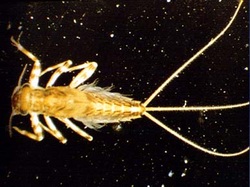You could hunker down at a microscope and wait until your eyes cross, or you could head down the road of genetic barcoding. Now, simmer down, you taxonomists. I don’t plan to argue you guys out of your jobs. In fact, I have my own criticisms of barcoding, but just humor me for a moment.
Genetic barcoding works by sequencing small DNA portions from unknown organisms and comparing those sequences to a barcode library. So say you’ve collected a bunch of something, let’s say unicorns from the North Pole as everyone knows all magical ponies live in the wintery north. Well, as a well-known unicorn scientist you are aware that there are several cryptic species of unicorns. This means that two or more species appear morphologically similar but, by at least one of the many species concepts, are still considered separate species. A quick PCR analysis, PCR gods forgiving, and a BLAST to the NCBI database could tell you which mythical unicorn species you now possess (should the barcode library of unicorns be complete).
Okay, I may have lied. Unicorns don’t really exist (outside the imagination of yours truly), but the problem of cryptic species does, along with a myriad of other identification issues such as morphological variation within species and even between adults and juveniles. Have you ever looked at drosophila larvae? They all look like squiggly, little, wormy things, every single one of them. Aside from some neat distinguishing behaviors – a few fling themselves like trapeze artists – you couldn’t tell them apart.
So, it makes sense that a useful tool like barcoding has received so much attention, but let’s not get carried away. This isn’t the messiah come here to solve all our problems. The way I see it genetic barcoding is the microwave of the 1970’s housewife: a new tool for the modern taxonomist. It heats your food in mere minutes, but you can still burn the pot roast. Criticisms include incorrectly identified species sequences, a substantial error rate, and lowered ability to distinguish between recently diverged species. These comments all point towards the necessity of well-studied taxonomists to make final decisions.
Me? I’m sticking to the microscope for now. Having a good grasp on taxonomic identification seems like it will always be a useful tool.
Jessica Craft

 RSS Feed
RSS Feed
